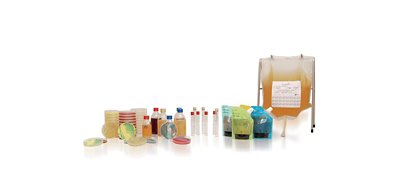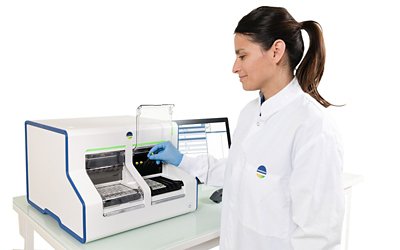Listeria Infection, Prevention, and Control in the Food Industry
A Harmful Bacteria Causing Rare but Severe Foodborne Diseases
WHAT IS LISTERIA?
Listeria is a genus of Gram positive bacteria, belonging to the Listeriaceae family and composed of 20 species1, including Listeria monocytogenes which is pathogenic for humans and animals (zoonosis) and Listeria ivanovii which is pathogenic for animals but rarely for humans.
Listeria monocytogenes cause one of the most serious and severe foodborne diseases called listeriosis.
Listeria monocytogenes are widely distributed in nature.
Listeriosis transmission is generally through eating contaminated food, in particular dairy products and ready-to-eat meat and fish products.
This article gives an overview of:
- The Listeria monocytogenes pathogenic bacteria
- How Listeria monocytogenes is transmitted
- How Listeria spp. and L. monocytogenes can be detected, prevented and controlled
- The risks of Listeria monocytogenes for consumers
- Treating listeriosis
- Overview of industries affected by Listeria
- bioMérieux’s products and solutions for detecting and preventing Listeria spp. and Listeria monocytogenes

HOW IS THE LISTERIA MONOCYTOGENES PATHOGEN TRANSMITTED?
Listeria species are found in soil, water, vegetation, effluents, a broad range of foods, and feces of humans and animals and can contaminate foods.
Listeria monocytogenes have been found in a variety of raw foods, as well as unpasteurized milk and ready-to-eat foods.
Unlike many other common foodborne diseases causing bacteria, L. monocytogenes can survive and multiply at low temperatures usually found in refrigerators and are able to multiply even at high salt concentrations. They are destroyed by correct cooking.
Eating contaminated food by L. monocytogenes is the main route of infection.
Infection can also be transmitted between humans, notably from pregnant women to unborn babies.
HOW CAN LISTERIA SPP. AND L. MONOCYTOGENES BE PREVENTED IN THE FOOD INDUSTRY?
Public health agencies provide guidance to industry, develop and enforce regulations.
They also investigate, manage and stop outbreaks by recalling or withdrawing contaminated foods and warning the public.
All sectors of the food chain should implement Good Hygienic Practices (GHP) and Good Manufacturing Practices (GMP) as well as a food safety management system based on the principles of Hazard Analysis Critical Control Points (HACCP)2.
Food manufacturers should also test against microbiological criteria, as appropriate, when validating and verifying the correct functioning of their HACCP based procedures and other hygiene control measures. In addition, producers manufacturing food associated with risks of Listeria must conduct environmental monitoring to identify and eliminate niche environments, including areas that favor the establishment and proliferation of L. monocytogenes2.
Modern technologies using genetic fingerprint - Whole Genome Sequencing (WGS) - allow for a more rapid identification of the food source of listeriosis outbreaks or human clusters by linking L. monocytogenes isolated from patients with those isolated from foods2.
HOW CAN THE PRESENCE OF LISTERIA SPP. AND LISTERIA MONOCYTOGENES BE DETECTED IN THE FOOD INDUSTRY?
Listeria detection methods in the food industry are mostly cultural but also based on alternative automatized technologies like PCR tests or ELISA tests, which take a shorter time to present results amongst other benefits.
Various internationally recognized methods (ISO standards) are used for the detection and enumeration of Listeria species and Listeria monocytogenes, such as ISO 11290-1:2017 for detection and ISO 11290-2:2017 for enumeration6.
The traditional detection method gives presumptive results in 3 days, however for confirmed results, additional morphological, biochemical and growth tests are required which take 2 days.
Various alternative diagnostic methods are currently used to save time and labour and have led to enhanced detection, identification and quantification of Listeria monocytogenes; these methods include, for example, immunological tests using antibodies to capture the target antigen, fully automated Enzyme-linked Immuno-Sorbent Assay (ELISA) test and Polymerase chain reaction (PCR).
More recent and rapid identification method, MALDI-TOF MS (Matrix Assisted Laser Desorption Ionization-Time of Flight Mass Spectrometry) identifies a microorganism based on its unique protein profile.
HOW CAN LISTERIA SPP. AND L. MONOCYTOGENES BE CONTROLLED IN THE FOOD INDUSTRY?
Many countries have introduced legislation to control the incidence of listeriosis and in many cases regulations require microbiological monitoring of L. monocytogenes in foods and food processing environments.
Environmental sampling and testing in processing areas are also required.
The EU Microbiological Criteria Regulation requires regular testing of ready-to-eat foods for L. monocytogenes and imposes limits of not detection in 25g at the point of production and up to 100 CFU/g at end of shelf life (if the foodbusiness operators could show at the authorities that it does not excess 100 CFU/g at the end of the shelf-life by challenge test).
In the USA a ‘zero tolerance’ approach has been taken for L. monocytogenes in ready-to-eat foods and regular testing is encouraged to demonstrate compliance.
The control of L. monocytogenes is required at all stages in the food chain and an integrated approach is needed to prevent the multiplication of this bacteria in the final food product.
The challenges for controlling L. monocytogenes are considerable given its ubiquitous nature, high resistance to common preservative methods, such as the use of salt, smoke or acidic condition in the food, and its ability to survive and grow at refrigeration temperatures (around 5 °C)2.
Listeria species are also common colonisers of food factories where they may form biofilms that are difficult to remove. These biofilms can act as reservoirs of persistent L. monocytogenes contamination for processed foods, if not controlled. The presence of Listeria species in the food factory environment is often used as an indicator for L. monocytogenes contamination.
WHAT ARE THE RISKS OF LISTERIA MONOCYTOGENES TO THE CONSUMER?
Listeriosis is usually acquired through foodborne transmission, except for fetal or neonatal infection, which is usually acquired in utero. Cutaneous infections have been reported very rarely among veterinarians and farmers following direct animal contact, particularly involving livestock products of conception3.
Listeria monocytogenes is most likely to sicken adults aged 65 or older, pregnant women and their newborns, and people with weakened immune systems. Other people can be infected with Listeria monocytogenes, but they rarely become seriously ill.
The symptoms of infection include fever, muscle aches, and sometimes nausea or diarrhea. Bacteremia is one of the main forms of listeriosis. If infection spreads to the nervous system, headache, stiff neck, confusion, loss of balance and convulsions may occur, followed by meningitidis. In otherwise healthy individuals, infection is usually mild.
However, in pregnant women, infection can lead to miscarriage, stillbirth, premature delivery, or infection of the newborn. People with a damaged immune system and the elderly are also at increased risk of more severe disease. The disease has a high fatality rate and high hospitalization rate in the susceptible population4.
In general, consumer’s guidance on the prevention of listeriosis are similar to guidance used to help prevent other foodborne illnesses, such as salmonellosis.
But special precautions have to be taken for persons in high risk groups (avoid consuming dairy products made of unpasteurized milk; deli meats and ready-to-eat meat products such as sausages, hams, pâtés and meat spreads, as well as cold-smoked seafood (such as smoked salmon)) and a good hygiene of the consumer kitchen.
L. monocytogenes in food are killed by pasteurization and cooking.

WHAT IS THE TREATMENT FOR LISTERIA MONOCYTOGENES POISONING?
Listeriosis can be treated if diagnosed early.
When infection occurs during pregnancy, prompt administration of antibiotics prevents infection of the fetus or newborn.
Depending on the form of the disease, the recommended treatment is amoxicillin with gentamicin. An alternative treatment is trimethroprim/sulfamethoxazole. Listeria is naturally resistant to cephalosporins5. There’s no resistance for the reference treatment, except for the alternative treatment.
KEY FIGURES:
- According to the CDC, Listeriosis, caused by the bacterium Listeria monocytogenes, is the most deadly foodborne illness. Although serious illness with Listeria is rare, for people who do get sick, the infection can be particularly lethal: An estimated 1,600 illnesses and 260 deaths from the bacterium occur each year in the U.S.
Data (sources): https://www.cdc.gov/listeria/index.html - In 2017, Europe reported 2,480 confirmed invasive human cases of listeriosis and 225 deaths due to listeriosis are reported (13,8% of fatality rate).
Data (sources): EFSA Journal 2018;16(12):5500
WHAT COMMON INDUSTRIES ARE AFFECTED BY LISTERIA?
A wide variety of industries are affected by Listeria contamination with a main focus on meat and dairy industries.
L. monocytogenes has been found in many food products, but its presence is particularly hazardous in chilled processed foods with a long shelf life, such as smoked fish, pâtés, soft cheeses and ready-to-eat cooked meats.
Because of its ability to grow slowly at low temperatures, multiplication to dangerous levels in refrigerated foods can occur, unless controlled.
Listeria species are also common colonisers of food factories where they may form biofilms that are difficult to remove. These biofilms can act as reservoirs of persistent L. monocytogenes contamination for processed foods if not controlled.
Discover Our Solutions
Discover More Foodborne Contaminants
References:
TAXONOMIC DESCRIPTION Leclercq et al., Int J Syst Evol Microbiol 2019;69:7481
https://www.microbiologyresearch.org/docserver/fulltext/ijsem/69/1/74_ijsem003097.pdf?expires=1566489057&id=id&accname=sgid025318&checksum=EA77CDA290EE703B8F84EC01F0F7F371
https://www.who.int/news-room/fact-sheets/detail/listeriosis
https://www.cdc.gov/listeria/technical.html
http://www.searo.who.int/topics/listeria_infections/en/ + ECDC 2019 ZOONOSIS REPORT
http://www.searo.who.int/entity/emerging_diseases/Zoonoses_Listeriosis.pdf?ua=1
ISO 11290:2017 Microbiology of the food chain - Horizontal method for detection and enumeration of Listeria spp and Listeria monocytogenes - Part 1: Detection method - Part 2 Enumeration method

?qlt=85&ts=1719939390517&dpr=off)




